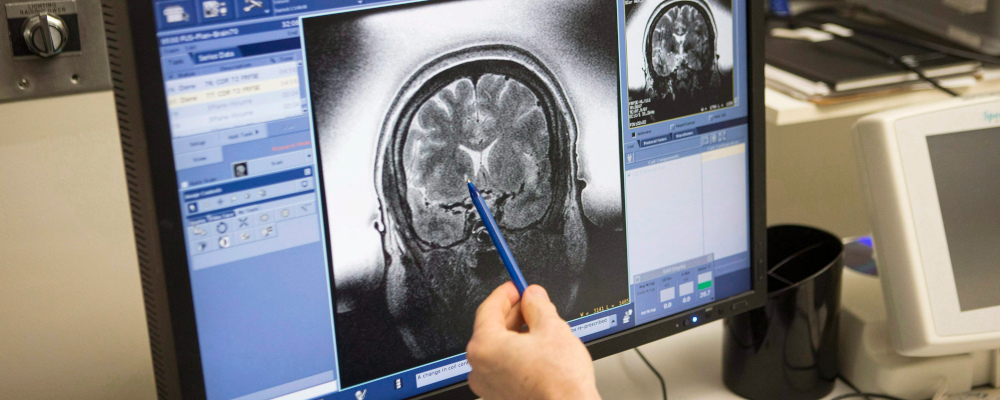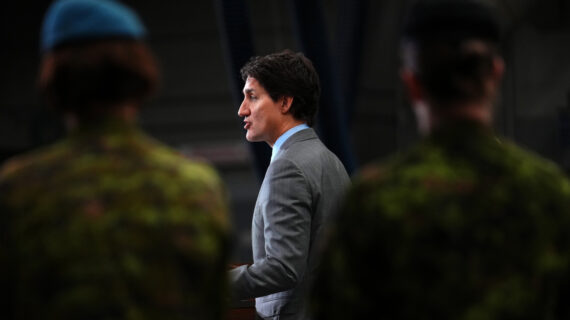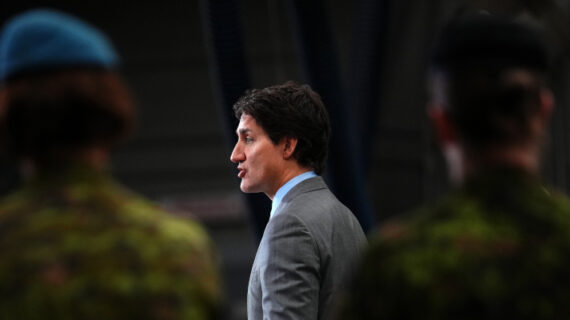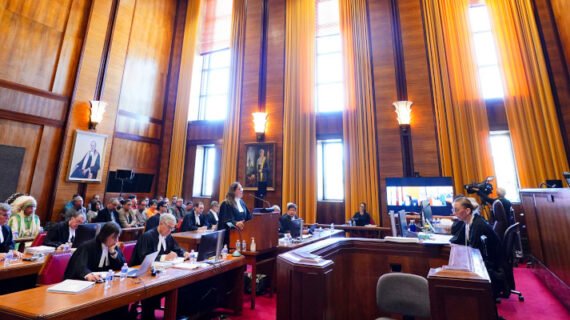The Hub’s first annual Hunter Prize for Public Policy, generously supported by the Hunter Family Foundation, focused on solving the problem of long wait times in Canada’s health-care system. A diverse group of ten finalists have been chosen from nearly 200 entries, with the finalists and winners chosen by an esteemed panel of judges, including Robert Asselin, Dr. Adam Kassam, Amanda Lang, Karen Restoule, and Trevor Tombe. The Hub is pleased to run essays from each finalist this week that lay out their plans to help solve this persistent policy problem. The winners of the first-ever Hunter Prize for Public Policy will be announced on Friday, September 29.
Canada’s health-care system, plagued by prolonged wait times, finds itself at an inflection point. Some of the many services that Canadians wait for are the results of various diagnostic imaging scans. Data points, such as a 5.4-week national average for CT scans and staggering 20-week waits for MRIs in jurisdictions like Nova Scotia, underscore a pressing need for policy intervention.
The solution: establishing a pan-Canadian teleradiology network. This model promises interoperability—a key principle of the Canada Health Act—and responsiveness, optimizing expertise from radiologists across jurisdictions and reducing the waiting periods for essential diagnostics like CT scans, MRIs, and ultrasounds. Such a network will create an interconnected ecosystem that systematically shares medical imaging and expertise across the entire country. Think of it as a digital highway for radiology.
Consider the following scenario: in New Brunswick, radiology resources face pressure from heightened demand, compounded by a limited pool of radiologists. As a result, median wait times in this province reach eight weeks for CT scan interpretations and 12 weeks for MRIs, primarily due to the scarcity of specialists available for timely image evaluations. In contrast, Ontario boasts a better radiology infrastructure with a larger pool of radiologists. However, due to the current fragmented system, Ontario’s wealth of expertise is not set up to address the shortfall in New Brunswick.
The repercussions of these delays extend beyond the health sector. The Conference Board of Canada reports that in 2018, a 30-day delay in MRI and CT scan services resulted in an economic hit of $3.54 billion. Systemic inefficiencies prevented nearly 380,000 Canadians from their work, resulting in a tax revenue loss of $430 million.
A pan-Canadian teleradiology network will ensure that medical images from one jurisdiction can be transmitted to another jurisdiction with available capacity. It is like having a library of radiologists at your disposal. If doctors in one jurisdiction are unavailable, the system quickly finds other qualified doctors to help, ensuring that patients receive prompt care regardless of their geographic location. This interoperability ensures that every Canadian, no matter where they reside, has timely access to top-tier diagnostic care. By connecting patients with available teleradiologists, the system can adapt to surges and declines in diagnostic demand, ensuring steady care delivery during periods of increased need while accommodating regional differences in demand.
While the network’s potential remains largely untapped at the national level, isolated provincial and territorial networks show promise. A salient example is the collaboration between a hospital in Iqaluit, Nunavut, and radiologists at The Ottawa Hospital. Before Iqaluit’s 2010 CT scanner acquisition, patients traveled to Ottawa, incurring costs of up to $25,000 and two-week stays. By implementing teleradiology services, Iqaluit patients benefited from localized imaging complemented by expedited interpretations from Ottawa-based radiologists, leading to cost efficiencies, diminished wait periods, and a reduction in the emotional and logistical burdens of extended travel.
Prince Edward Island’s pioneering use of teleradiology to reduce CT scan wait times, combined with Ontario’s Northern Telecommunications Health Network’s efforts to serve remote areas, are additional examples of policy-driven approaches in teleradiology delivery. The Canadian Drug and Health Technology Agency indicates that eight provinces and territories permit teleradiology within their borders. Of these, six accept services from outside their boundaries. Illustrating the strain on resources, two territories rely on a shared radiologist, while Quebec turns to international teleradiology providers. Given these patterns, the bottom line is clear: Canada requires a pan-Canadian policy framework to ensure teleradiology is accessible across the country.
Canada’s move towards teleradiology is not simply about harnessing existing technological capabilities, as many hospitals, provinces, and territories are already primed for its adoption. This transition underscores a policy imperative, urging a shift in how radiology services are delivered and regulated. Central to this is the Picture Archiving and Communication System (PACS), integral for efficient medical image storage and transfer. A majority of Canada’s radiology facilities already have PACS capability.

Drawing parallels, the Pan-Canadian Pharmaceutical Alliance, established in 2010, demonstrates the strength of coordinated healthcare initiatives. By navigating the complexities of provincial drug negotiations, and with assessments from established review bodies, the alliance showcases the tangible fiscal benefits of unified policy strategies and provincial/territorial collaboration—realizing savings of $3.41 billion on reduced drug prices annually. Such successes are a blueprint for designing a pan-Canadian teleradiology network that can accommodate the unique health-care challenges faced by each jurisdiction.
For a truly interconnected teleradiology ecosystem, policy guidelines need to encourage inter-provincial PACS integration, drawing inspiration from successful models like the U.K.’s National Health Service and America’s Veterans Health Administration. The latter’s public-private partnership approach has witnessed a surge in operational efficiency by 44 percent, translating into tangible benefits: faster processing times, streamlined workflows, and a visible reduction in patient wait times.
Realizing this vision is within reach with the right funding strategies. Beyond tapping into federal health agreements, avenues like the Canada Health Infoway Fund—a $50 million federal fund earmarked for provinces and territories to build pan-Canadian virtual care programs—and partnerships with the private sector should be pursued. These investments can produce strong returns on investment, reflecting the benefits teleradiology brings to the table: from economic gains to enhanced patient care and accessibility.
A pan-Canadian teleradiology network aims to optimize radiology services across the country, ensuring timely and efficient diagnostics for all Canadians. Teleradiology infrastructure for a more robust cross-provincial and territorial network exists, and smaller-scale collaborations have proven successful. Ottawa’s ability to convene all jurisdictions can launch the creation of a truly pan-Canadian network that can meet the fluctuating demands of radiology services across the country. The federal government’s role in aligning expertise and resources will serve as a linchpin for reducing diagnostic wait times and transforming overburdened provincial and territorial health-care systems.




